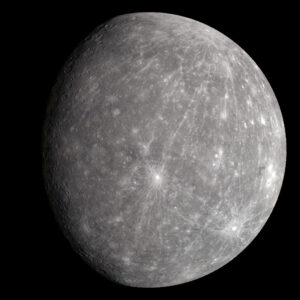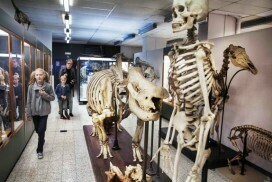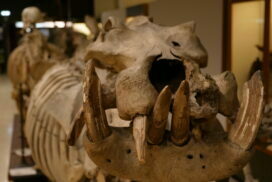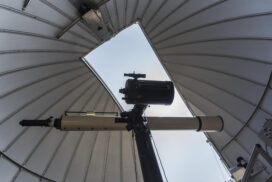Mercury
Author: Pawel Krynski
Type: Telluric planet
Rotation Period: 58.6 days
Revolution Period: 88 days (3/2 times the rotation period)
Orbit: Mercury sits on an elliptical orbit, with distance to the Sun varying between 46 and 70 million km (0.3 to 0.46 times the distance to the Earth)
Radius: 2440 km
Surface gravity = 3.7 m/s2, so a 70 kg person, could weight 25.9 kg on Mercury
Main composition: Silicate core, iron core that occupies a sizeable fraction of the planet

Crédit: NASA/Johns Hopkins University Applied Physics Laboratory/Arizona State University/Carnegie Institution of Washington
Mercury, the closest planet to the Sun, is difficult to observe. It remains close to the horizon, visible only at dawn or dusk, when the Sun is just below. This is what earned it the title of morning and evening star in ancient times. It was eventually named after Mercury, the swift-footed messenger of the gods, because of its rapid movement across the sky, given its short period.
With a radius of 2,440 km, Mercury is the smallest planet in the solar system, only 1.4 times larger than the Moon. Its surface is covered with impact craters, scars left by meteorites over billions of years. In the absence of atmosphere and geological activity, these marks will never fade. Despite its small size, Mercury is almost as dense as the Earth (~5.5 g/cm³) due to its exceptionally large iron core, which accounts for 60% of its volume – a higher fraction than any other planet in our Solar System.
Mercury’s orbit and rotation are uniquely linked. It takes 88 Earth days to complete one orbit around the Sun and 58.6 Earth days to rotate once around its axis, resulting in a resonance between its rotation period and its period of revolution of 3:2. This means that if you were on Mercury at sunrise, you wouldn’t see the sun set until an entire Mercurian year had passed. For months on end, one part of the planet remains scorching hot at 420°C, while the other is plunged into icy darkness at -170°C. This is due to Mercury’s thin, almost non-existent atmosphere, which allows heat to escape rapidly.
But perhaps the most intriguing mystery surrounding Mercury is its orbit. Unlike the near-circular trajectories of most planets, Mercury follows an elliptical path, its distance from the Sun varying from 46 million km (0.3 Astronomical Units, or AU) at perihelion to 70 million km (0.46 AU) at aphelion. Even stranger, this elliptical orbit moves itself with time, a movement called precession. Mercury’s orbit completes one full rotation around the Sun every 2.25 million years.
For centuries, astronomers tried to explain this anomaly using Newtonian mechanics. In 1846, after successfully predicting the existence of Neptune, Urbain Le Verrier attempted to solve the mystery of Mercury’s precession. He proposed an invisible planet, Vulcan, orbiting even closer to the Sun, disturbing Mercury’s motion. But Vulcan was never discovered. The mystery remained until Albert Einstein presented his theory of general relativity in 1915. Einstein showed that the deformation of space-time by the Sun’s immense gravity perfectly explained Mercury’s orbital shift, providing one of the first major confirmations of his groundbreaking theory.














